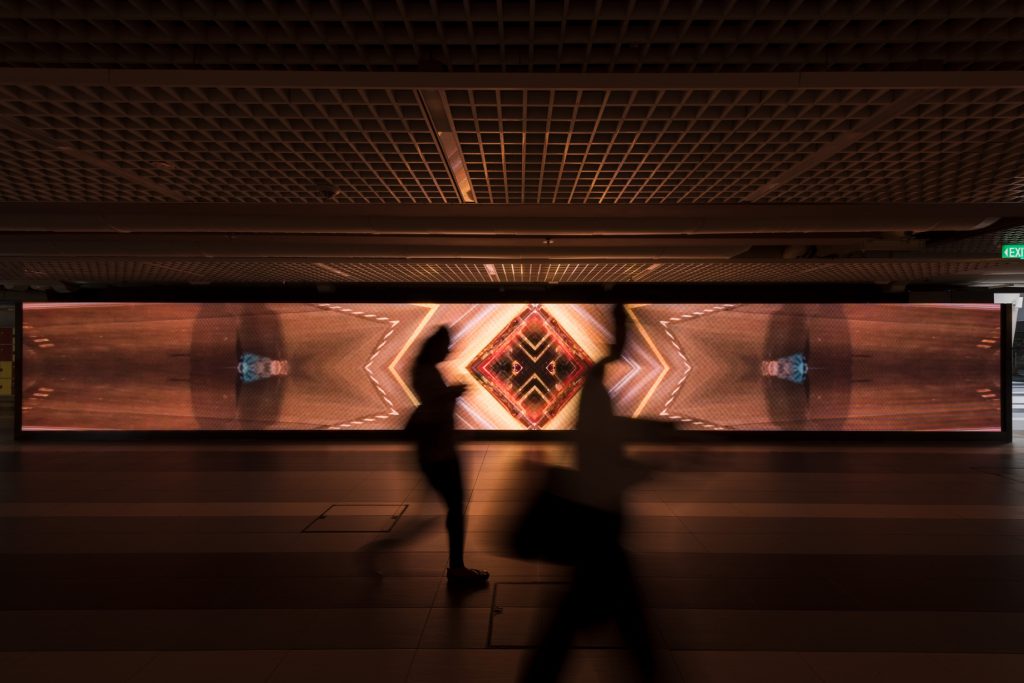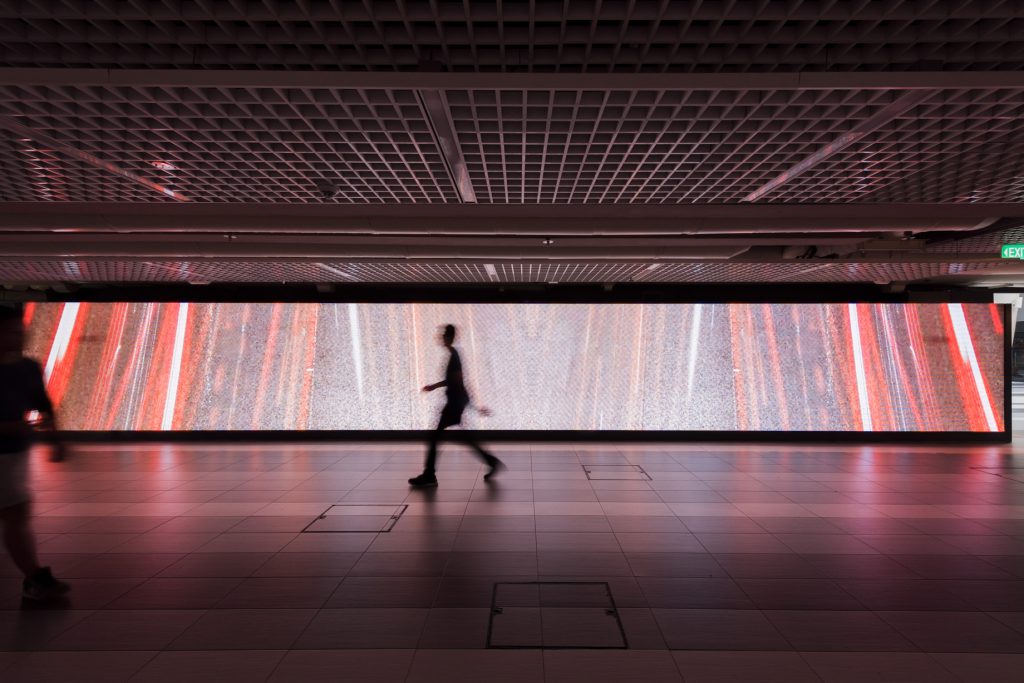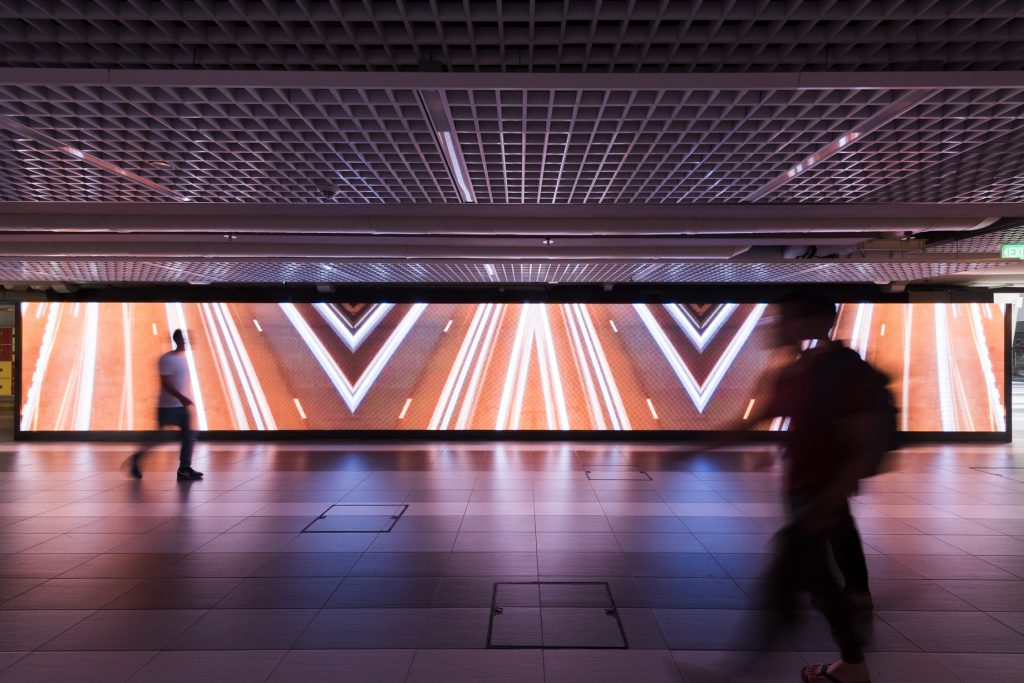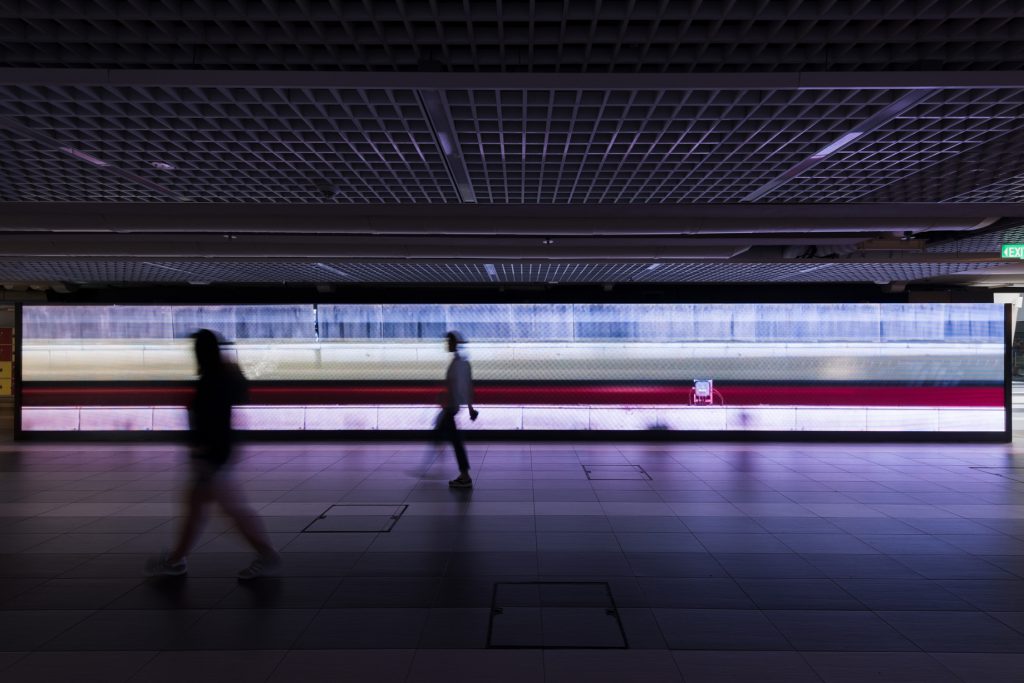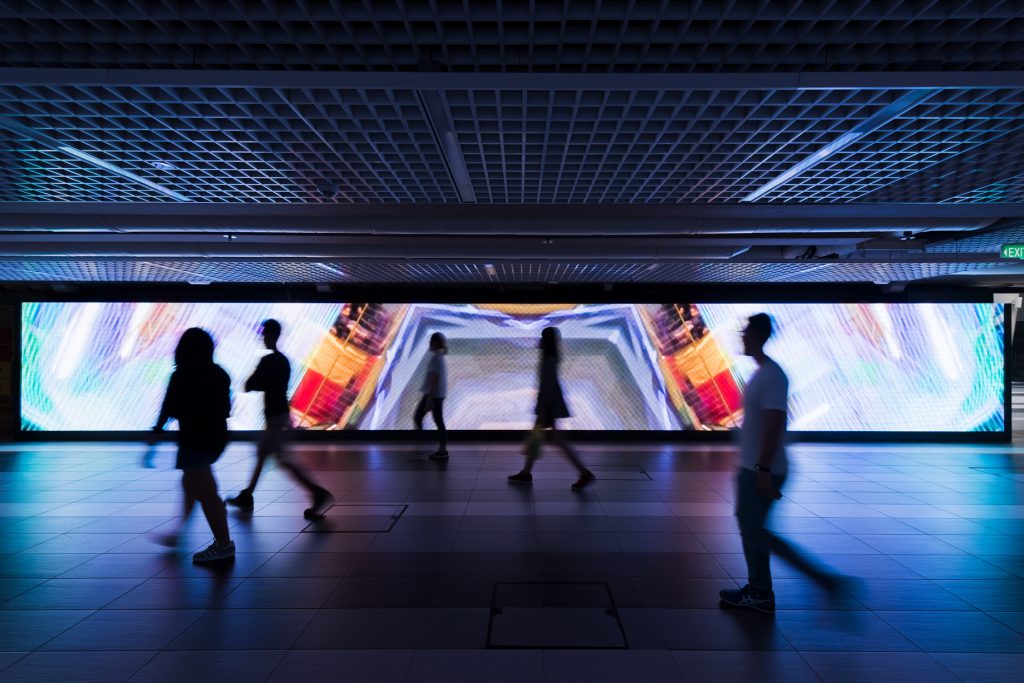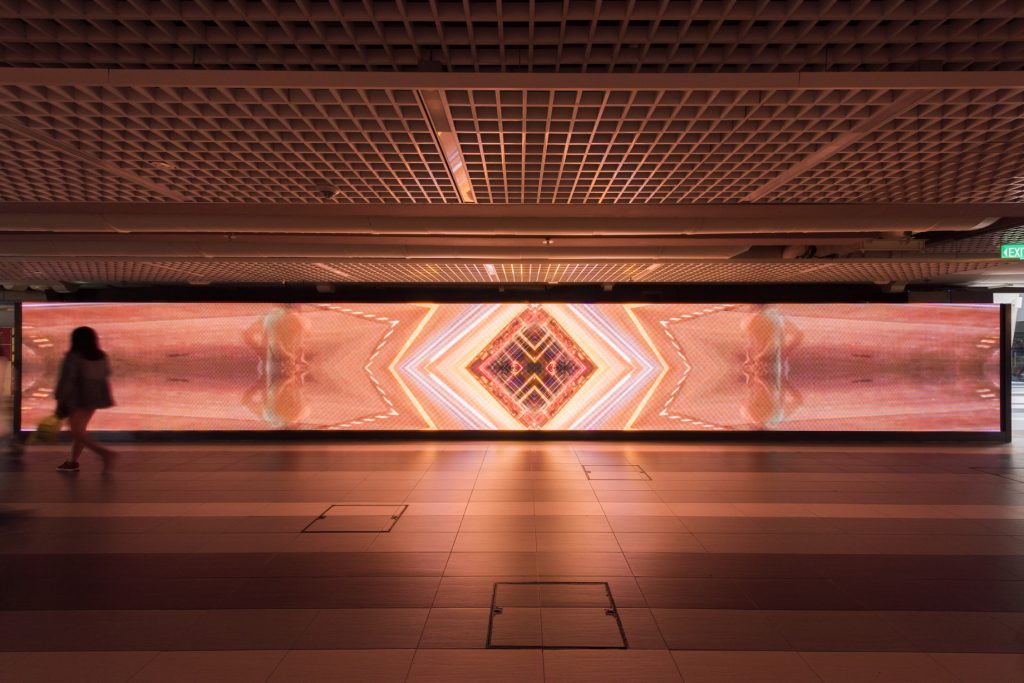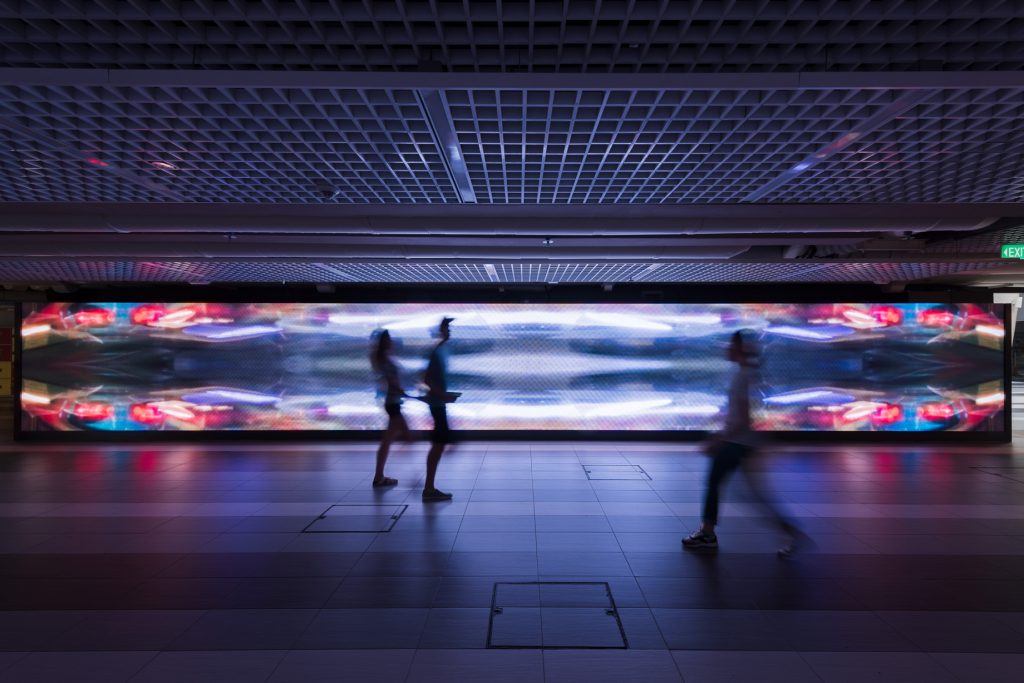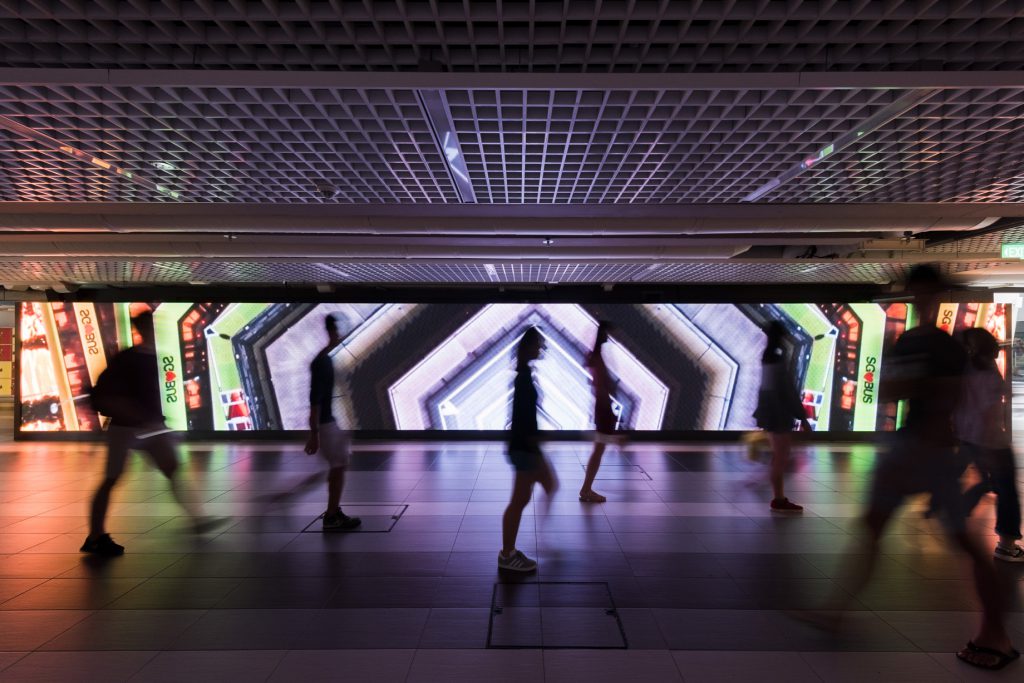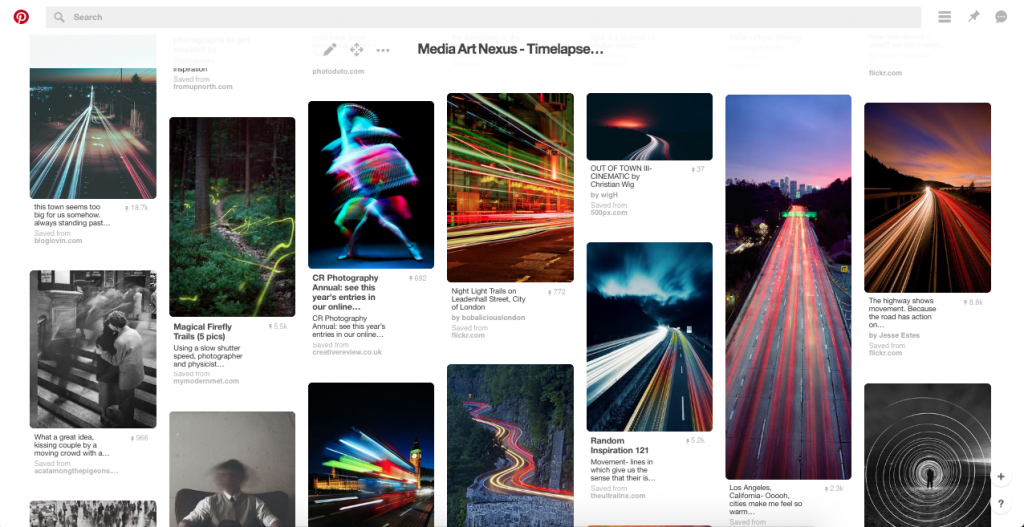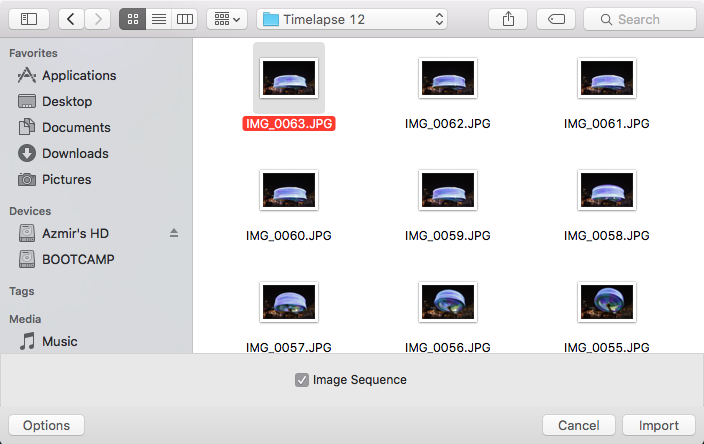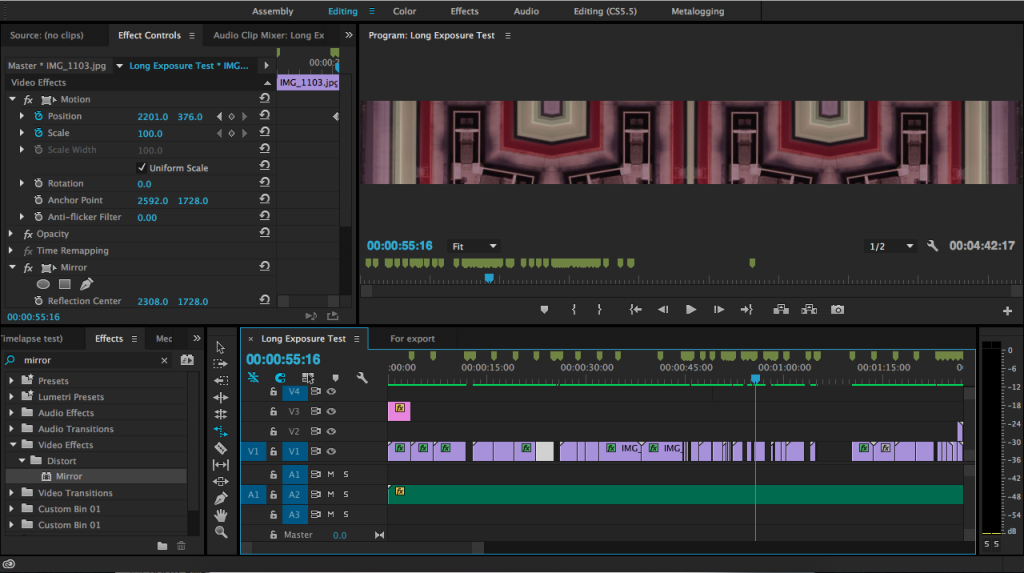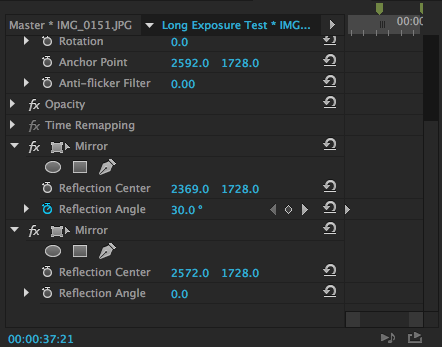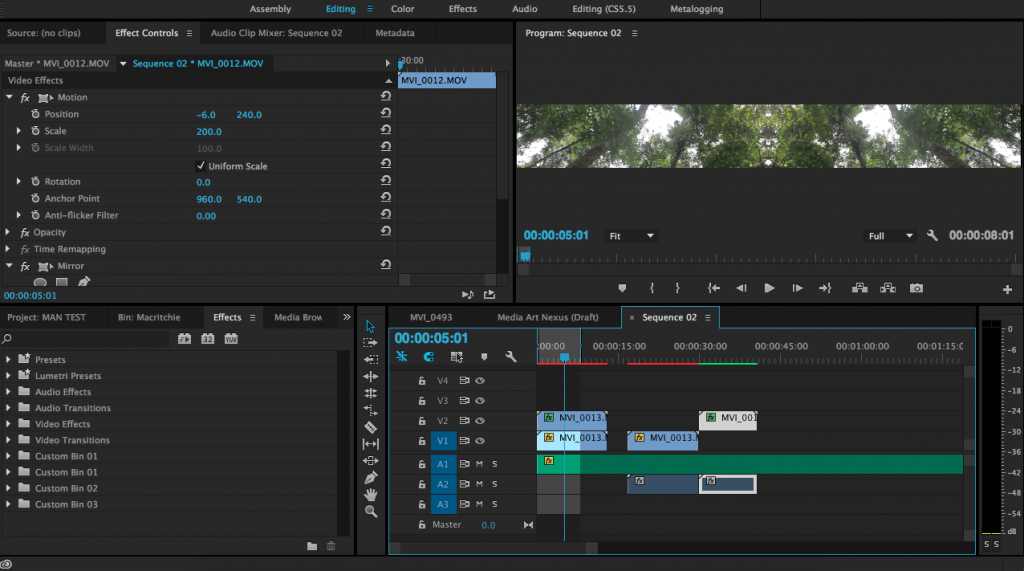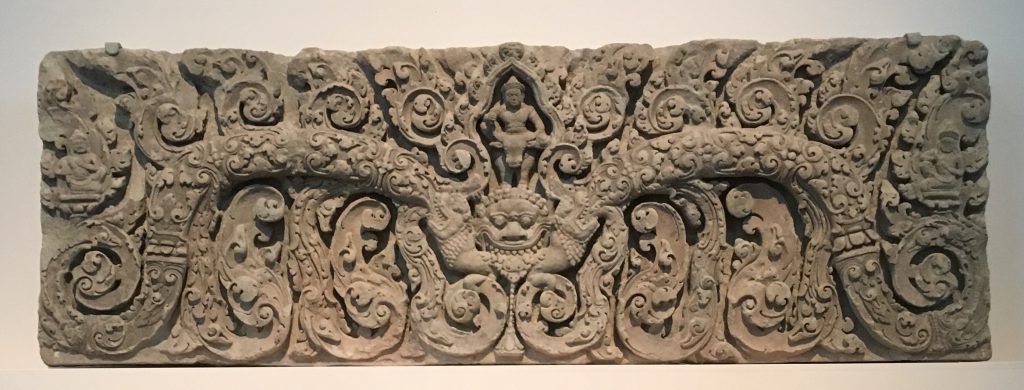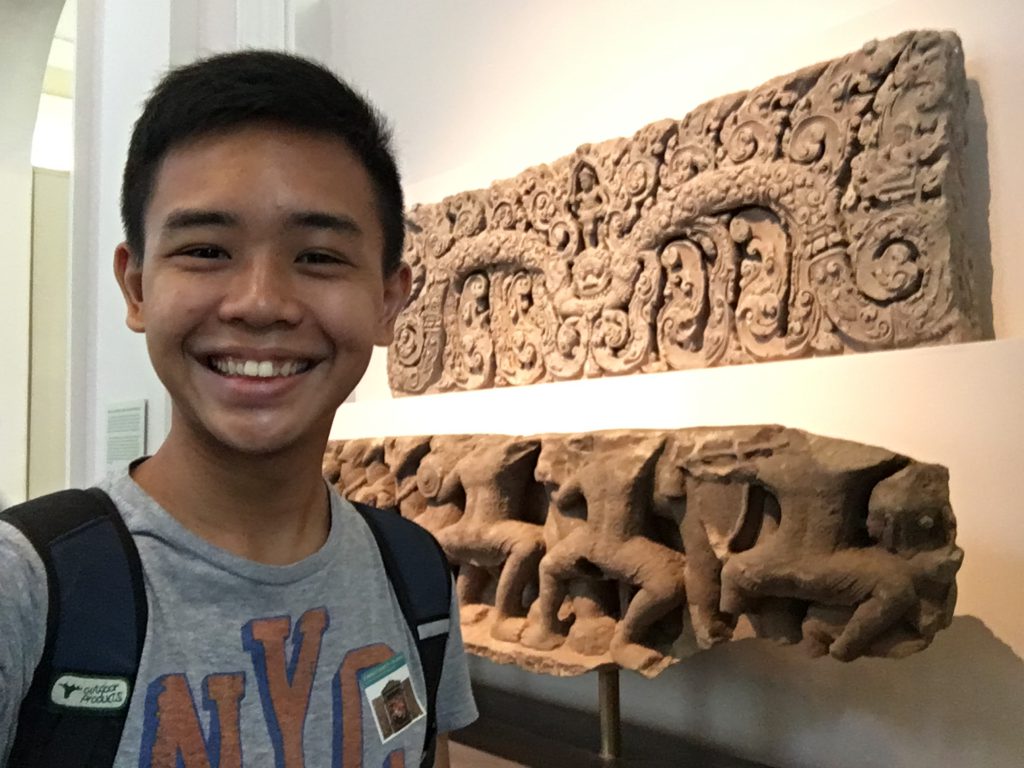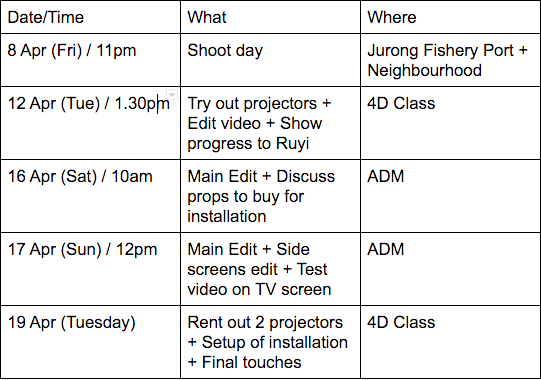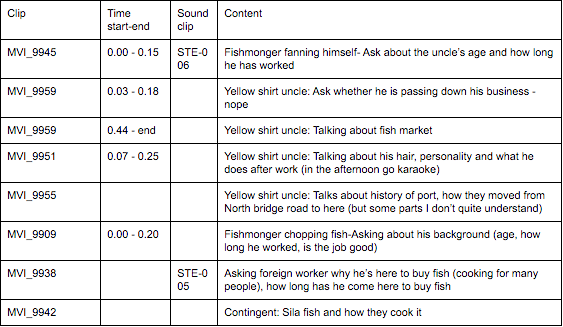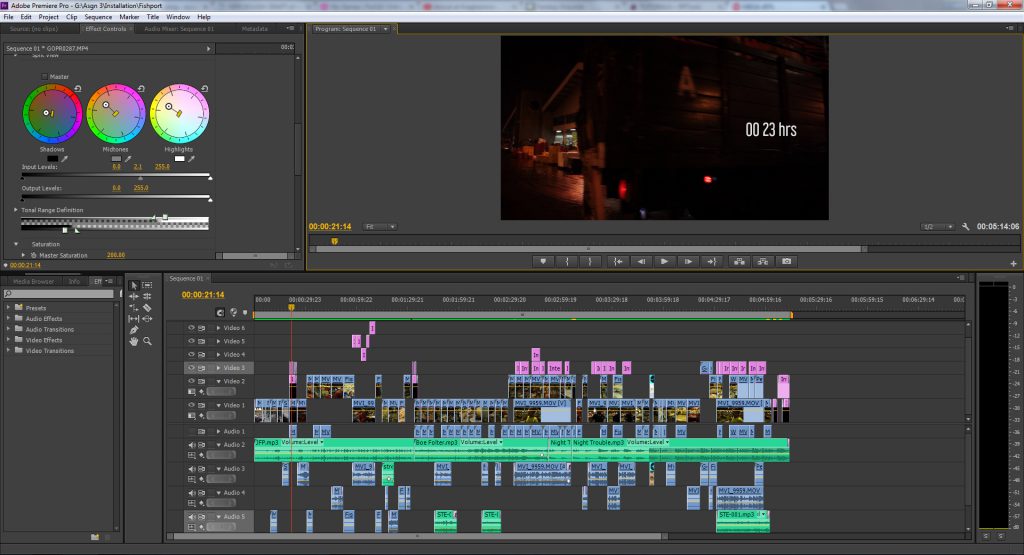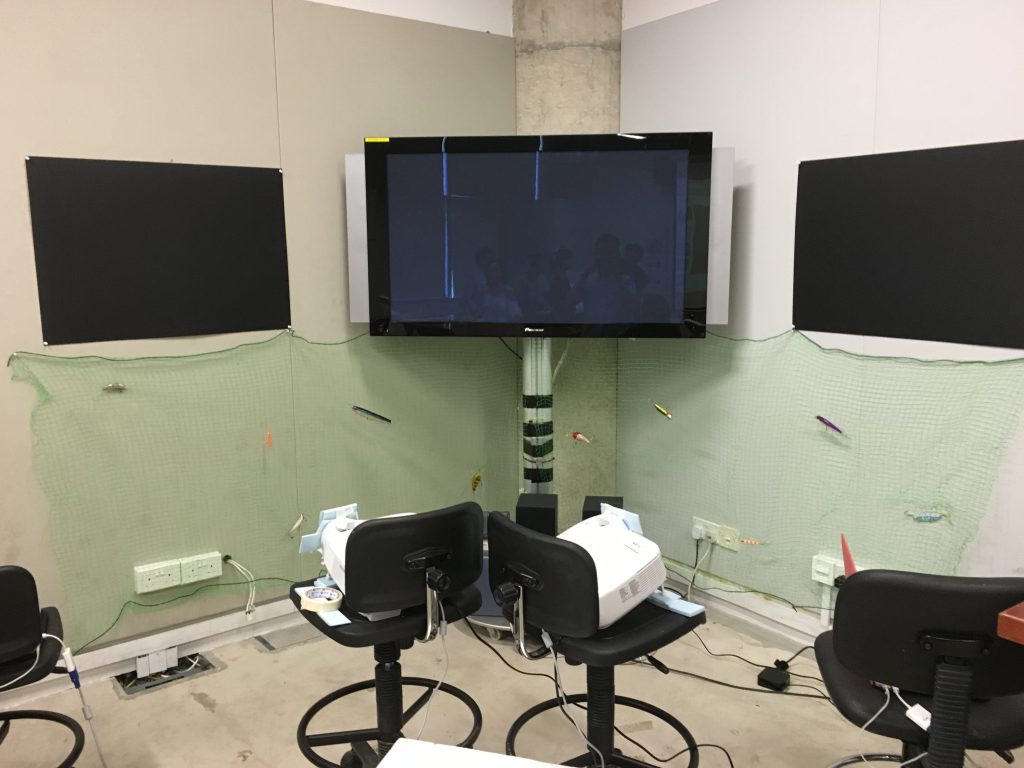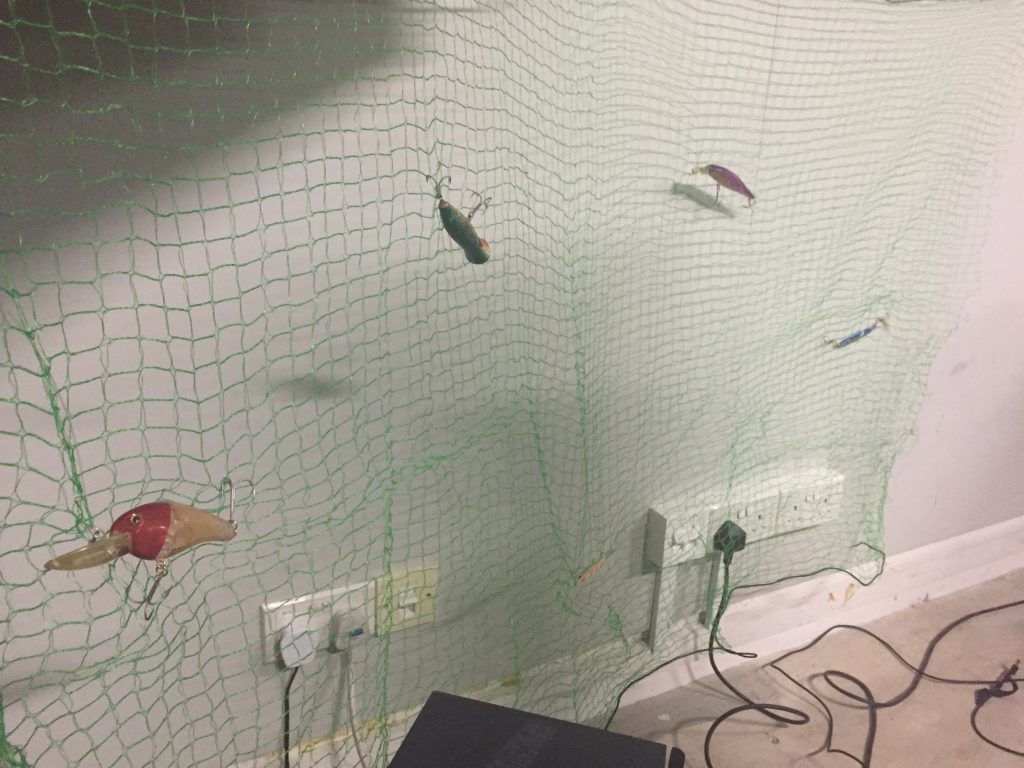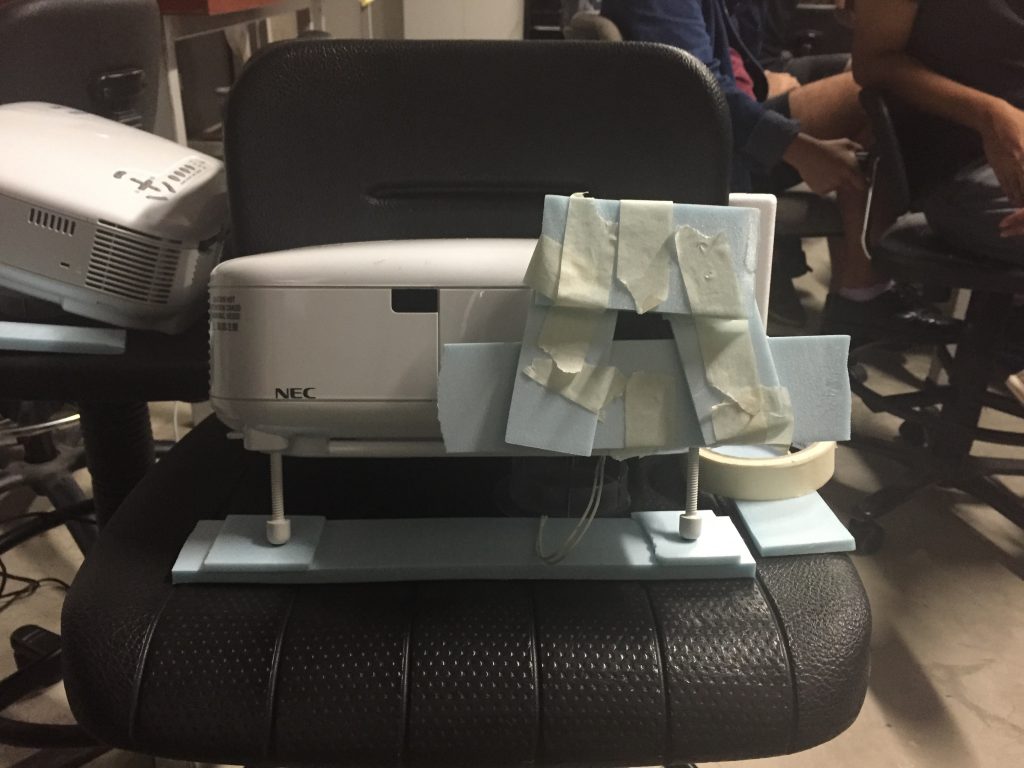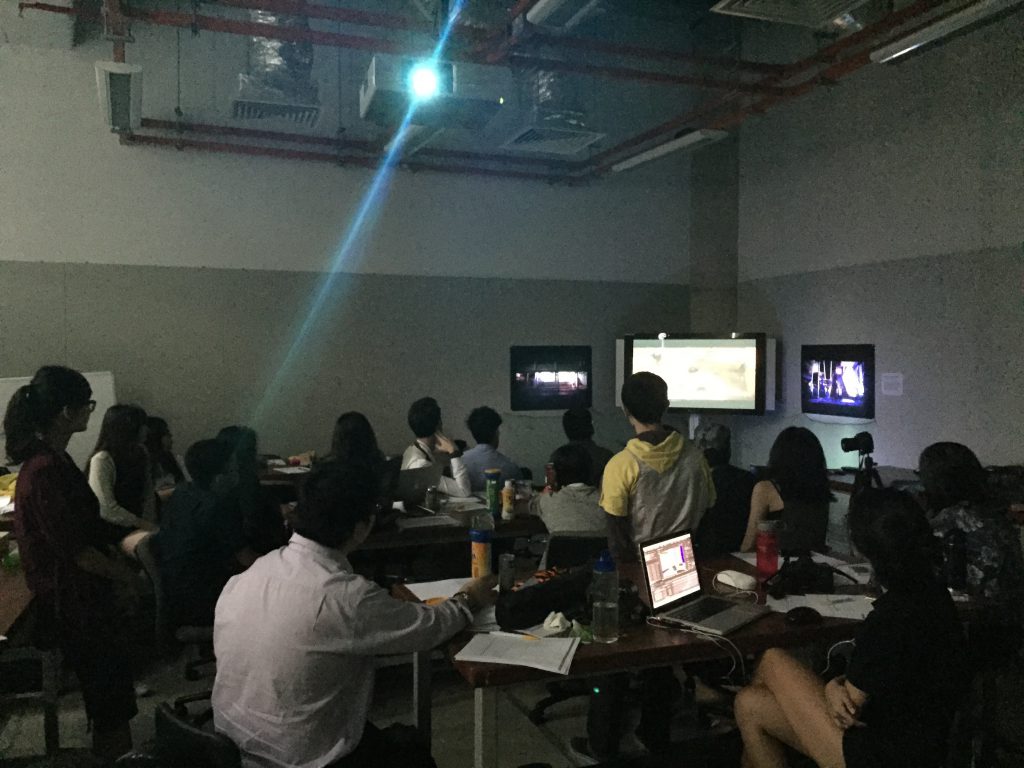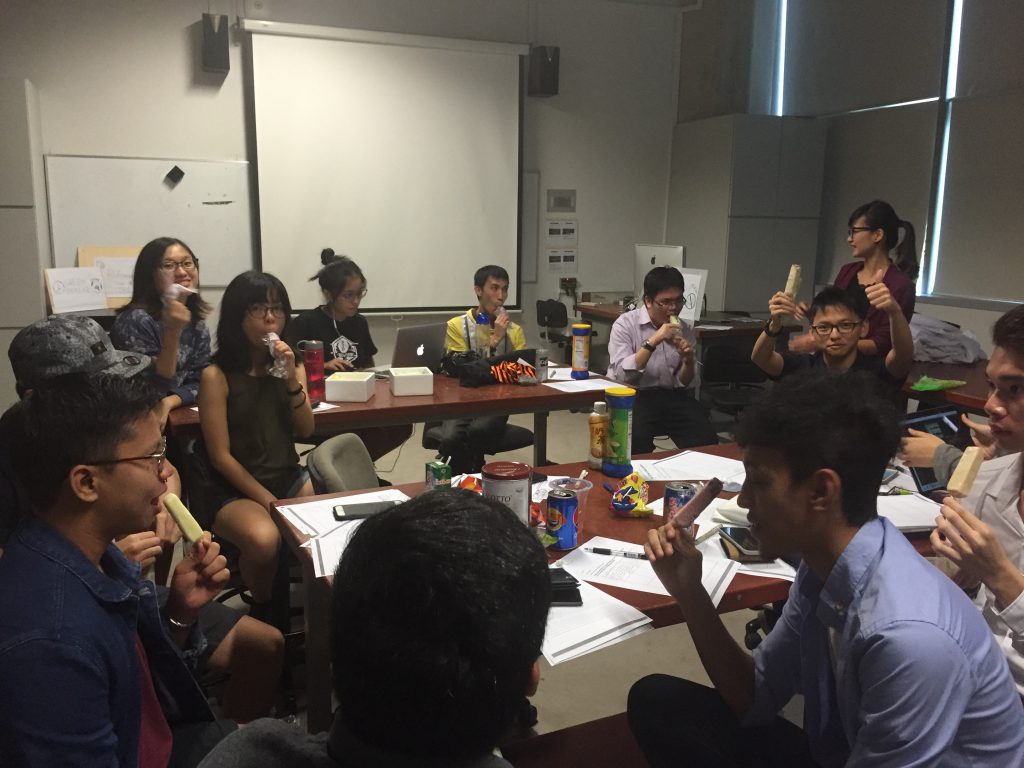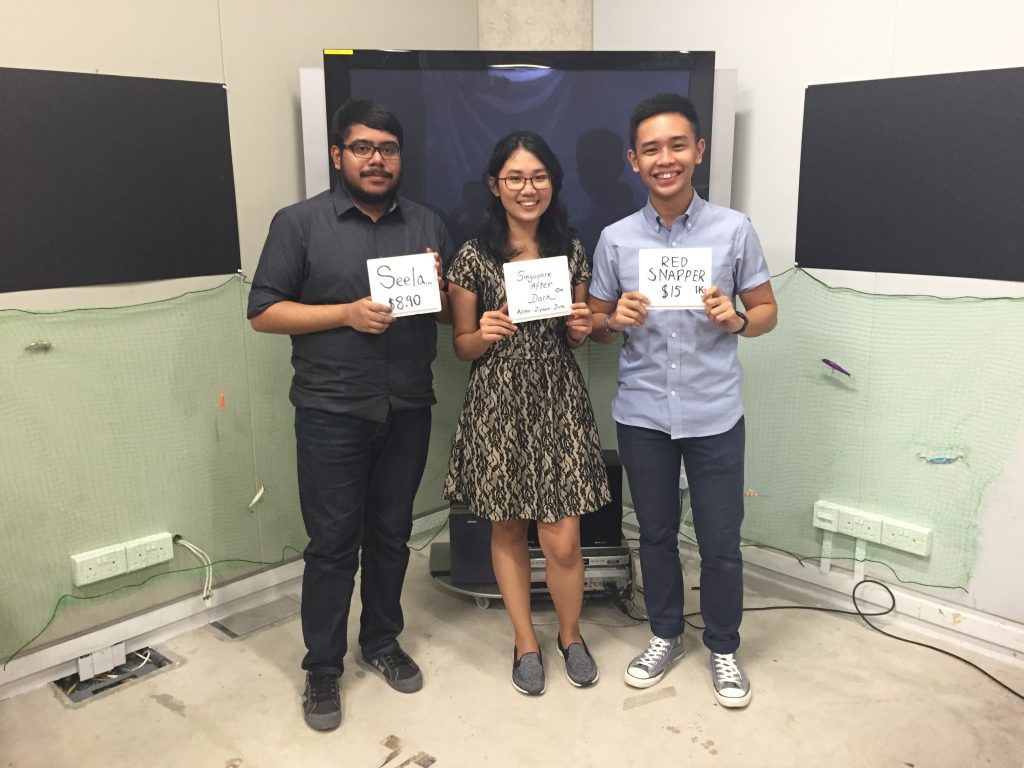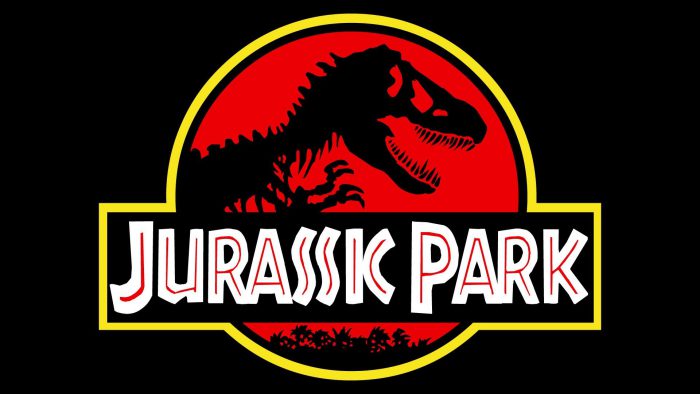
My Favourite Film and Director
STREAK
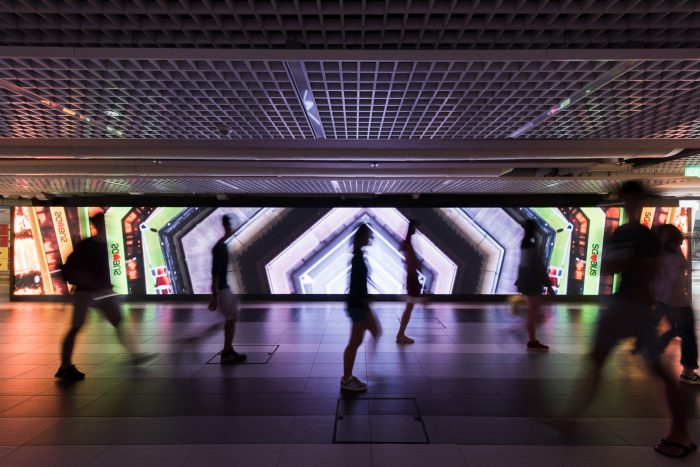
STREAK
2017
Experimental film
3840 x 480 LED screen
Abstract
‘Streak’ is a kaleidoscopic alternate reality that plays on the manipulation of light and time. Through the use of long exposure photography, light entering the lens is prolonged and stretched out, giving a sense of movement through time. Drawing inspirations from Godfrey Reggio’s 1982 experimental film ‘Koyaanisqatsi’, streak showcases the dynamic movements of lights illuminating the still night. Streak aims to captivate the viewers and evoke a sense of moving forward with its quick-paced and bright moving lights playing alongside with fast paced music. The use of different neon-like colours combined with overlaying effects alters the perception and reality of the original image and brings a whole new dimension to time and space.
Music: Apex by Deep Shoq
Selected Stills
Exhibition at North Spine (Media Art Nexus Wall)
Photos by Solomon Quek Jia Liang
Streak

Streak – An experimental film, 2017
Concept / Theme
‘Streak’ captures the vibrance of an urban city fueled by lights and how the city truly comes alive at night. Using the medium of photography, I wanted to capture and create the manipulation of time by ‘stretching’ the captured image and combining it with effects to evolve an image into something new and refreshing.
Inspirations / References
Koyaanisqatsi (1982 experimental film by Godfrey Reggio)
- The film consists primarily of slow motion and time-lapse footage of cities and many natural landscapes across the United States. The visual tone poem contains neither dialogue nor a vocalized narration: its tone is set by the juxtaposition of images and music.
TimeLAX 01 by iVideomaking
This is a very interesting approach to a moving city in Los Angeles through timelapse.
- Another example of the use of timelapse to create the feeling of the city being alive and moving.
Kaleido-lapse by Young Elephant (Sai)
Another great example of what I hope to achieve for my own video with the use of mirror effects to achieve a kaleidoscope effect.
Initial moodboard from Pinterest
https://www.pinterest.com/alazmir/media-art-nexus-timelapselong-exposure/
Lucas Zimmermann – Traffic Lights 2.0

Photo by Te-Wei Liu

Photo by Mark Burban

Photo by Andres Caldera
Process
It took me several nights spanning across a few weeks and a lot of patience to capture these timelapses. In order for me to get the streak effect, each shot/angle had to be experimented based on how long I wanted the shutter to be open in order to capture the moving light.
So, for example, I take about 9 seconds for each picture. I set my timer for about 20 minutes, which will roughly give me about 133 photos. If importing into Adobe Premiere Pro with a 24fps sequence, I can achieve about 5 seconds of moving visuals.
Importing
Marking the beats of the song
Overall timeline of project
Prototype
This was the initial test of the visuals, testing out the resolution, quality as well as the speed of the clips. The visuals are raw and have no added effects applied to it.
Methods
The effect that was widely used throughout the video is the ‘mirror’ effect which essentially reflects the image to form a more sophisticated shape/form. All of my editing (compiling timelapses, arranging of clips, applying effects) is done in Adobe Premiere Pro CC and tweaking of colours of certain images is done in Adobe Lightroom.
Reflection city tutorial by Artbeats Inc.
Mirror reflection video effect tutorial by Justin Odisho
Kaleidoscope effect tutorial by Alex Edwards
Current
Future Plans
As of now, I hope to get all the clips sorted from start to end by next week and also to tweak and tighten up certain transitions in between different clips to make it more cohesive. There is also room for me to continue experimenting with different effects and possibly overlaying certain elements to bring out the idea of the city being alive.
Week 5-7: A different direction
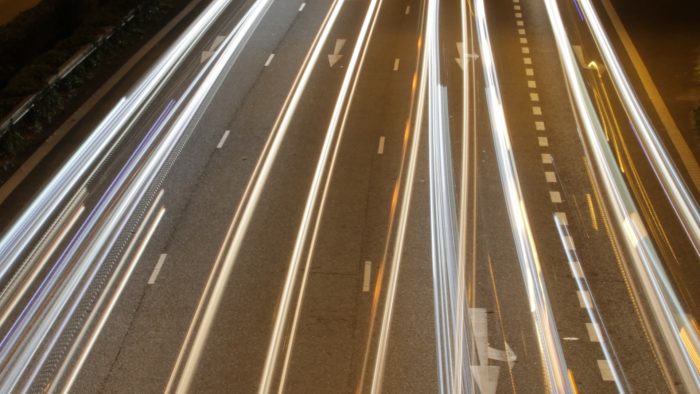
A Fresh Start
Following my progress from the previous weeks, I was not exactly satisfied with the outcome of the experimental film(nature) that I had created and that it was different than what I had envisioned, following a few minor problems that come along with it. With that being said, I’ve decided to put the nature theme that I initially picked for this project aside for possible future personal projects instead (when I have more time) and go a completely fresh and new direction. Referring to other ideas in the first post (moodboard), I decided to adapt the use of long exposure photography and incorporate this technique into an experimental film.
I’ve always been intrigued with how light is perceived and how amazing our eyes enables us to see the world with the power of light. I wanted to combine the manipulation of light and time to create something that we don’t get to see with our naked eyes. By doing long exposure photography, I am able to allow the shutter to be open for a specific period of time, capturing any form of light that passes through the frame and therefore ‘lengthening’ the streak of light. A normal photo captures the light at the specific point of time, almost like a freeze frame, but long exposure allows me to capture streaks instead.
For this project, I did a series of long exposure timelapses where I turn the set of photos captured into a moving image. Therefore, the light streaks captured will look like its flowing through the image, giving this sense of movement.
Experimentation
I did some test shots and was quite pleased with the results. The beauty of long exposure photography + timelapse is that there is some calculation involved to get the desired time for each angle. I had to play around with the shutter speed first to see roughly how I wanted to achieve the final outcome of the light streak. After a few tests, the best setting for me now is opening the shutter at 6 seconds for each image and then setting an intervalometer that will automatically take a photo every 3 seconds. This means that I take about 9 seconds total to capture one image. I set my timer to about 20 minutes for each framing that I wanted, which estimates around 133 photos. When I import into adobe premiere pro, I set my sequence to 24fps which means that for each set of photos, I’m able to achieve about 5 seconds worth of moving visuals.
The video below is in the 1920 x 1080 resolution. This is the overall frame of my photo before I actually scaled it to make it look more ambiguous. The reason I took a wide shot instead of a ‘zoom in’ is because it gives me ample room to manually select the specific framing of the 3840 x 480 resolution to be.
The video below is the same video from above but with a resolution of 3840 x 480 pixels. I scaled to make it look more zoomed which allows it to look more ambiguous and more futuristic looking.
Another example of what I have so far.
Challenges
One of the challenges I’ve faced so far for this is finding varying shots for the light streaks. The best so far that fits the current theme are cars. I’m still seeking for more objects or things that emit light and it has to be moving in order for me to manipulate the light using long exposure.
Another challenge is setting up the shot properly and ensuring the camera is untouched for the duration of the shot. I have to ensure the focus is properly adjusted before I start the timelapse. There was once when the focus was off for the entire duration of a 20 min shot, which resulted in loss of time and I had to reshoot the same scene again.
I’ve also had trouble finding a suitable song to fit the fast paced movement of the shots initially. Most of the songs felt a little slow and didn’t fit the futuristic/urban lights feel to the image. However, after scouring for hours on the internet, I managed to find a fitting song for the experimental film that I’m doing from soundcloud.
Test footage
For testing on the wall, I had compiled a few scenes that I’ve captured so far just to have a feel for it and see the quality of the overall project. I guess the good thing about taking photos for timelapses is that there is a lower chance of quality loss.
To progress from here, I will be looking out for more places/things to film and also working on my edit, mainly editing to the beat of the music and hopefully combine it into a whole visual piece.
Week 2-4: Progress update
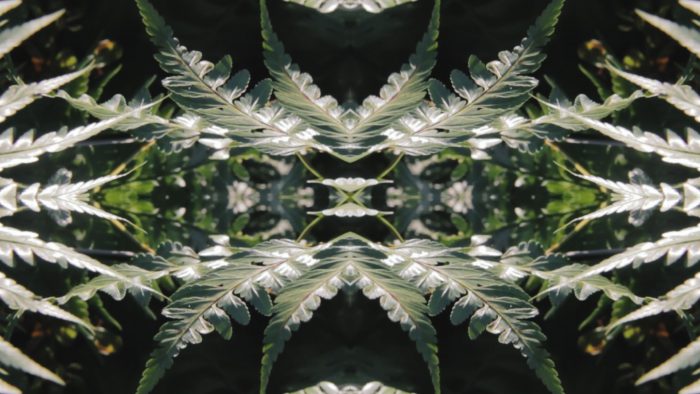
Experimentation
Mirror effect
Following up from my previous post, I went around and did some experimental shots at a nature reserve to try and have a feel of what I can come up with relating to the theme/mood I was going for. I played around with the effects in Adobe Premiere Pro (mainly mirroring and glitching) in order to bring out a kaleidoscope effect/generative art from a mundane piece of visual.
For this piece, I basically did some movement with the camera in the actual filming and then I added a single layer of mirror effect. I personally like this piece as the reflected image and the movement allows it to look like it is evolving within itself, creating a new and refreshing image with every frame.
Next, I experimented with more layers within the same clip and overlayed 4 different layers of ‘mirror effect’, each with a different angle to multiply the image to make it look more abstract. This produces an image almost similar to when we look through a kaleidoscope.
These are a few more examples I did experimenting around with the mirror effect to see the outcome of it.
Glitch effect
In addition, I referenced from youtube tutorials to learn how to make glitching effects, either to compliment a transition from clip to the next or just to give an extra layer of effect to enhance the clip.
Speed ramping effect
This clip below was a combination of the glitch effect I’ve learnt earlier and also doing a bit of speed ramping (which is basically speeding up certain parts of the clip and slowing it down).
Slow motion effect
I also tried out slowing down the time of the clips to test out how I can incorporate different speeds within different footages to give more depth to the entire film. The clip below was slowing down the time with a combination of a cant angle movement, resulting in a more smooth and stable shot.
Realisation
After experimenting with these clips and effects, I realised that I’ve been working on the 1920 x 1080 resolution instead of the intended Media Art Nexus wall resolution which is 3840 x 480.
I converted my files to fit the sequence settings of 3840 x 480. However, I wasn’t very satisfied with the outcome when my 1920 x 1080 footage had to be resized to 3840 x 480 as that would mean that I would have to double the pixel count on the long side which would result in a loss of quality of the footages. This also led to more problems that affected the storytelling I initially envisioned. Due to the ‘crop’ resolution, it looked like there was a narrow field of vision which didn’t portray the visuals I had in mind. A large section of the images were cropped out which resulted in an almost ‘zoom’ perspective of these images.
Timeline screenshot of the footage in 3840 x 480 resolution.
Example footage with mirror effect in 3840 x 480 resolution. There is a narrow field of vision as compared to what I initially intended.
Overall, these experiments have helped me to realise what actually works and what didn’t. It also allowed me to improve my technical skill of the software and workflow of the project.
Week 01: Initial Ideas + Research
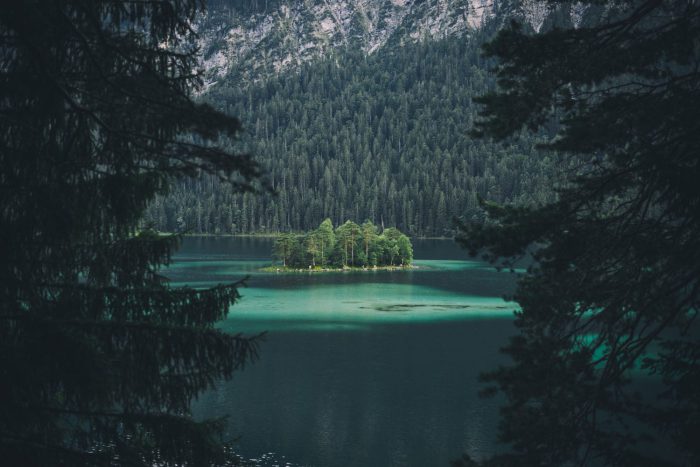
Ideation
Out of the 3 main themes that were presented (Data, Illusion and Play), I knew I wanted to explore deeper into the theme of ‘Illusion’. There were 2 main ideas that I wanted to explore under ‘Illusion’, mainly playing on the idea of manipulating ordinary everyday objects and turning them into a completely new subject. Both of the ideas are categorised under experimental film:
- Timelapse/Long exposure
- Kaleidoscope effect + the mixture of nature and cityscapes
Timelapse / Long exposure

I’ve always been intrigued by how long exposure alters the image completely. It is something we don’t normally be able to capture with our naked eyes but more so with the help of technology. There is also a sense of movement running through the image even though it is just a still image.
This video is an example of how timelapse and long exposure photography can work together to display a sense of movement through the city. I love how the lights from the vehicles, buildings and street lights enables this sense of dynamic flow within the city.
Kaleidoscope effect + A mixture of Nature and Cityscapes
I’m leaning more towards this second idea. I’m inspired by how Central Park in New York City is a whole plot situated in the middle of the city full of buildings and skyscrapers and I was wondering how I can combine these two different elements of nature and city together into a cohesive piece.

Top view of Central Park
I’m looking to create an experimental film combining the elements of nature and cityscape, putting Singapore in the context of how there is still nature all around us despite how technologically advanced and urbanised Singapore has become. Building on this idea, I want to also include specific visual elements that will allow the film to evolve into a more abstract piece instead of just a narrative.
I did a little research on how Singaporeans can connect back with nature despite the urban growth and came across this article.
The article talks about how “there is a growing disconnect between the people who live in cities and the natural environment” and that they are trying to bridge the gap between nature and the community.
“This initiative aims to synergise and coordinate all nature-related events, activities, and programmes to better reach out to the community to encourage them to bond over and with nature.”
I found it interesting that there are efforts being placed to encourage the growth of conserving nature and how we as Singaporeans, living in an urban city can learn to start appreciating nature and coexist with one another.
I found some videos online that allowed me to visualise my project, and piecing together different parts of inspiration and ideas into one complete project.
The mood I’m going is roughly reflected in these two videos, with certain scenes reflecting nature in its quiet and untouched form. The videos evoke a certain mood that I want to apply to my project.
This video shows the kaleidoscope and mirror effect applied to reflect an ordinary image to turn it into a more abstract piece, giving a fresh perspective of what is normally seen. I want to incorporate these 2 elements together and there is definitely still a lot of experimentation to be done through filming as well as the editing process to achieve the desired outcome.
Assignment 01: Asean Civilizations Museum Visit
Name of artefact: Lintel with Yama riding on buffalo
Material: Sandstone
Country: Cambodia
Date: 12th or 13th Century
Analysis
The lintel produces symmetrical properties reflected on each side. The designs are intricately carved out with detailed precision across the lintel. In the centre of the entire piece, there is a figure with a crown who appears to be riding on a buffalo. This suggests that the figure is the main subject of the entire piece and that its an important character.
Upon further reading, I’ve discovered that the figure is Yama, the guardian of the south and the god of death, and his mount is a water buffalo. This lintel also originated from Cambodia and could suggests that it was probably placed facing the south entrance of a Khmer temple. This indicates that there could also possibly be three other lintels with the gods from each direction placed at their respective entrances. Also in the centre, there are two lion heads emerging out of what appears to be a fierce beast, which then spits out what looks like floral garlands. Upon further research, it is distinguished that the lion heads signify bravery in Hinduism and Buddhism.
There could possibly be two different functions of this lintel. Firstly, it could function as a tool to educate the worshippers entering the temple through visual means, and secondly, to scare away unwanted visitors with fierce imagery who might not be familiar with the religion.
(248 words)
4D Project 3: Final Research Paper
Link to documentation is here.
Singapore After Dark: Jurong Fishery Port
Group Members: Azmir, Ziyaad, June
Concept: What’s the idea?
Singapore After Dark: Jurong Fishery Port is a documentary that aims to provide insight into the hard working lives of odd job workers and to enhance the significance of these lesser known occupations. The main video is compiled with montages of the bustling fishery port and insightful interviews of vibrant personalities to characterize the representation of Jurong Fishery Port. This documentary is presented in the context of an installation space, with two supplementary screens which utilise urban and suburban imagery and timelapses, to create a contrast between the hardworking fishmongers and sleeping masses. Employing the use of interviews, the video intends to highlight that, although the fishmongers work exhaustive long hours in a grimy environment and are subjected to the fish market’s unstable economic turnover, their unwavering optimism and responsibility towards their occupation is worthy of the public’s awareness and appreciation.
Relationship between content and form: How does the idea for the image influence the selection of the image’s content and process of execution
The content of the documentary is carefully curated to suit the medium of installation. To emphasize on the clear distinction between the silence of the resting population and the bustling activity in the fishery port, this video juxtaposes scenes of movement in the fishery port in the main video against side screens with minimal motion and figures. However, instead of using the loud ambience of the fishery port throughout the video, the sound design in the main video is kept at a peaceful rhythm using uplifting piano instrumental music, as to not overwhelm the viewers’ conventional perception of the stillness of the night. In order to maximise space in advantage to the documentary, side screens made of black cardstock are used to convey the idea of darkness in midnight hours, as white screens would be too bright and glaring for an installation with a night context.
Experimentation
Drawing reference from British filmmaker Ben Brown’s “Journey to a Costa Rican Food Forest” and Japan Tsukiji Fish Market, the documentary has a subtle balance between montages of the fresh seafood and liveliness of the fishmongers and buyers that represent the fishery port. Although filming in a busy fishery port was a daunting task, the team succeeded in using handheld filming technique to film various types of shots ranging from close ups to wide shots in order to comprehensively capture the essence of non-stop motion in the fishery port. By fully utilising the infrastructure of the fishery port, the team also managed to film bird’s eye view from the level two overhead bridge which spans the entire width of the fishery port, in which contributed to the many shots of the heavy trolleys that rumbled and pushed through the throng of people in the narrow walkways.
Presentation
Compiling different images of the many facets of the fishery port to form a documentary is done to minute detail. The documentary opens with imagery and timelapses of urban Singapore at daytime, which are mainly shot in populated areas such as Raffles Place and the Central Business District. The emphasis is on the people and traffic bustling through the day. Following the sunset timelapse, is a silhouette of a huge lorry moving away to reveal the huge building of the Jurong Fishery Port. The blinking time reflects that it is 00:23 hours, and the documentary unfolds by giving the audience a general overview to the fishery port. The accompanying piano music acts as a lullaby, which provides the video a calming atmosphere, to bring out the concept of however busy the fishery port seems at first glance, it too has a pattern of its own to ensure the order and operation of the fishery port runs smoothly. As the music picks up the pace, the documentary introduces faces of the fishery port. The interviews encompass simple and direct questions, to more in-depth enquiry of the business of the fishery port. The different demographic of interviewees also provide an insight of what the fishery port has to offer to different people, be it the local fishmongers or the foreign worker customers. The documentation closes with a thought-provoking sentence, with hopes that it leaves the viewers a lingering thought that every job has its own value, be it a white collar occupation or blue collar job. Forgotten occupations such as fishmongers play an important role in fueling the economy of the nation, considering their hard work and dedication despite working in odd hours and grimy environments, should not go unnoticed and under appreciated by the public.
4D Project 3: Final (Singapore After Dark: Jurong Fishery Port)
Singapore After Dark: Jurong Fishery Port
Link to research paper is here.
Group members: Azmir, Ziyaad, June
Main documentary:
Side Screen #1:
Side Screen #2:
Artist Statement
“Singapore After Dark: Jurong Fishery Port” is a documentary in the form of multiple video installations that contrast the scenes of the bustling fishery port and the stillness of suburban Singapore. Compiling dynamic scenes of the fishery port, stories from the fishmongers and buyers from various walks of life, we bring you on a journey from the grimy, wet floors to the lively interaction within this hidden community. The main screen is complemented by two supplementary projections which utilise urban and suburban timelapses and imagery, showing a clear distinction between the working labourers and the sleeping masses. Inspired by British filmmaker Ben Brown’s “Journey to a Costa Rican Food Forest” and Japan’s Tsukiji Fish Market, this work aims to provide insight into the hard working lives of odd job workers and to enhance the significance of these lesser known occupations.
Concept
For this installation project, we wanted to try a different approach to filmmaking, to break away from the narrative structure we’ve been more familiar with for the two semesters. Thus as we were conceptualizing our project, we were introduced to a British filmmaker Ben Brown, who made a documentary about the roots of food at the Costa Rican Food Forest. Hence, inspired by his project, we researched on various food farms in Singapore, which eventually led us to the Jurong Fishery Port. Instead of mimicking his works, we chose to do a fishery port because we felt that the fishery port was a topic that is unfamiliar among the masses. Thus, after we settled on our subject, we started conceptualizing the focus of our video. There were two possible paths:
A) To concentrate on the journey of the fish from where they were caught up till the point of them being served at restaurants
B) Focus on the occupation and stories of the fishmongers at the Jurong Fishery Port.
In the end, we chose option B as we felt there was more character to the place than we initially thought when we step foot on this port. The sights and sounds of this place were very overwhelming as we were greeted with bustling activities as far as the eyes could see. We wanted to bring out this idea of how each job has its own definitive value and to highlight this importance to people.
Inspiration
Ben Brown’s ‘Journey to a Costa Rican Food Forest’
Drawing inspiration from this video, we were thoroughly impressed by the quality and the content it brings to talk about the journey of the source of our foods. We decided that we wanted to evolve this idea and bring about our own ideas of a fishery port that only operates from 12am to 6am.
NHK Tsukiji World’s Largest Fish Market ‘The Incredible Hands’
We also used this documentary to see how they filmed their shots and their main focus of the show.
Alex Prager’s ‘Face in the crowd’
Dan Mace’s ‘Gift’
Timeline
Process
We went to the fishery port twice. The first time that we went, we wanted to have the feel of the whole vibe of the place and we didn’t film anything. We thought of all the shots we could do in the place the next time we came.
Shot List
The shots were broken down into a few places ranging from close ups to wide shots.
Fishery Port Scenes:
- Short pan
- Birdseye
- Wide shot from AVA bridge
- Chopping block
- Pouring fish
- Close up
- Different ages
- Resting (guy sleeping, people sitting)
- Calculating money
- Buying, customer choosing fish
- People stacking boxes
- Forklift moving
- Teamwork (multiple people carrying boxes)
- Sound (ZOOM)
- Lorries
- Trolley
- Weighing of fish
- POV shot of fish (GoPro inside icebox)
- GOPRO on the floor – filming feet, crossroads
- Short interviews of fishmongers
Side Screens Scenes
- Quiet neighbourhood (HDB)
- Empty walkway
- Cats roaming
- Empty Roads
- Empty shopping malls
- Not running escalator
Intro scenes:
- Raffles place
- Central Business District
- City skyline
- Sunset timelapse
- City hall (Funan crossing)
Equipments used for installation
- Projector x 1
- Mounting boards for projectors x 2
- TV x 1 + 1 set speakers
- Laptops x 3
- Fishing nets x 2
- Fish baits
- Styrofoam Box
Interview questions
We came up with a few short questions for the fishmongers before going to the port.
1) How long have you worked here?
2) Do you enjoy your job?
3) Is it tiring?
4) What do you do in the day?
5) How old are you?
As we interviewed some of them, their answers led on to even more questions for us to ask which allowed more content for our documentary.
Post Production
Although our documentary did not have a narrative structure to it, we still needed a suitable song to set the mood for our whole video. We set out and explored many genres of songs before deciding on 3 songs that went really well with each other throughout the entire video.
These were some of the songs we considered:
- https://soundcloud.com/rosesandbranches/fennel
- https://soundcloud.com/rosesandbranches/soevillesong
- https://www.youtube.com/watch?v=okDLWQaQx8U
- https://www.youtube.com/watch?v=rToP7oclarc
- https://www.youtube.com/watch?v=JoGtGYtVsT8
- https://www.youtube.com/watch?v=WZW0HwL06uA
- https://soundcloud.com/olafur-arnalds/tree
- https://soundcloud.com/olafur-arnalds/study-for-generative-piano-i
- https://soundcloud.com/rosesandbranches/boe-folter
- https://soundcloud.com/lightsandmotion/christoffer-franzen-wide-awake
- https://soundcloud.com/lightsandmotion/shadows
- https://www.youtube.com/watch?v=lB4SvxKgpAU
- https://www.youtube.com/watch?v=uojRASCjFbA
- https://soundcloud.com/moseqar/moseqar-there-she-wasii
- https://soundcloud.com/e-soundtrax/cinematic-piano-uplifting-royalty-free-music
- https://soundcloud.com/ahmed-gado-6-1/endless-melancholy-do-you-remember
- https://soundcloud.com/petitbiscuit/night-trouble
- https://www.youtube.com/watch?v=TWcyIpul8OE&spfreload=5
Initially, we had trouble trying to match the songs together but eventually, we managed to find 3 songs that tied in well with the feel we were looking for, for the entire video.
Final 3 songs used:
Florence Fennel by Roses and Branches
Boe Falter by Roses and Branches
Night Trouble by PETIT BISCUIT
There were a lot of layers involved in our main editing process. Fortunately, we had filmed lots of extra b-roll footage which allowed us to contrast the scenes from wide shots to close up shots.
Setting up
Final Installation
The installation received lots of positive feedback and we are genuinely happy the message of the video has been brought clearly to our audience 🙂
We also had a small surprise at the end of our presentation where we provided the class with potong ice cream that was hidden inside the styrofoam box as part of our contribution to the potluck. We were happy that the class enjoyed their little dessert.
Challenges
- Time
The main challenge for us was time. Having to stay awake throughout the night to film and document this definitely took a toll on us and we knew how it felt to be in the shoes of a working fishmonger.
- Getting the shot
With the narrow and busy walkways they had in the fishery port, we basically had to find a proper place and time when we are filming our shots. As much as we can, we need to be aware of our surroundings first before we actually start filming as we do not want to hassle the people working there. That being said, sometimes a good shot can be missed due to these reasons.
- People
The first time we came to experience the feel of the place, we noticed that a lot of the fishmongers were constantly busy and looked pretty fierce. As much as we would want to get an interview from them, we also didn’t want to step on their toes or put a stop to their work. However, the second time round, we actually took the courage to ask a few of them and we were actually quite surprised with the response we were given. They were not actually that fierce as they look and some bothered to even talk more than we had asked for.
- Location
First off, the location wasn’t really accessible by public transport so we had to use the car to get in and out of the place. The place was really wet and grimy with the smell of fish right up our noses. We did do our own research about the place first before going there but didn’t expect it even more than we bargained for. We left with clothes stinking the entire car and our feet was just soaked with dirty water.
- Structure
As there wasn’t a narrative structure, the initial process of piecing together the footages into 5 mins was a tough process. We had to rely on our chosen songs to give us an idea of roughly the start, the essence and the end of the video. However, as we slowly ease into the editing process, it eventually got easier and we just had to do minor tweaks to it.
Reflections
Azmir:
Making a documentary was something I wanted to achieve since the very beginning of foundation 4D. With similar visions set out with this team, I was able to achieve this visual idea and put it out which eventually went further than my expectations. I’m really glad to be a part of the team with these 2 talented individuals who worked countless hours to achieve the final product. As this was the first time we are working together, we set out this project playing to our own individual strengths and learnt a lot from each other. Right from the beginning, we were set on what our subject matter would be and how we wanted the overall outcome of the documentary to be. The Jurong Fishery Port experience was entirely new to me and this place really opened my eyes to this hidden world that most Singaporeans wouldn’t have a clue about. Dodging trolleys that the fishmongers would pull from one end to another end on a narrow lane and trying not to fall from the slippery wet floors is something I would never forget.
I felt that our planning stage was quite successful which led to minor hiccups from filming all the way to post production. We met the timeline that we initially set for ourselves and I’m really proud of my team. It was an interesting experience to be working together on the edit as well. Ziyaad came up with the initial draft of the video and we all worked towards tweaking to match the feel of the video that we wanted right from the beginning.
Overall, I am grateful to have met such amazing teammates, each with their own set of skills, that enabled us to create this visual piece. I’ve definitely had a fun experience from the planning stage all the way to the execution stage and learnt much more about them which enhanced the outcome of the final installation.
Ziyaad:
I’ve never made a non-fiction video before, so this project was a real eye opener. Since I took visual effects in polytechnic, everything I’ve done has been fictional and sometimes over-the-top. Making a documentary has been a really insightful experience. It was a good idea that we went to recce the venue a week before the shooting day. Having a good idea of what to expect and what scenes we could shoot really streamlined the schedule during shooting day. We didn’t waste much time and managed to get what we came for.
Shooting at the fishery port was quite a fun experience. The paths were narrow and slippery, so we had to be really careful. We also could not use tripods as we didn’t want to block the way. Everyone was busy, but we still needed to get interviews and certain special shots. We tried to be as polite as possible, and while some people didn’t want to get interviewed, thankfully we managed to get a couple interviews shot. We really wanted to set up a GoPro to shoot a scene of the fishmongers emptying a container of fish towards the camera. We had to scour around the fishery port several times before we finally managed to get permission from a stall to get the shot.
I learned a couple of new things from editing the main video. It was really different from editing a narrative piece, because there wasn’t really a set structure for our video initially. I struggled a bit at the start, but after discussions with my group mates, we managed to make a simple structure to follow, which was mainly influenced by the music we used. It starts off slow, and by the end it picks up a bit. We took a ton of shots, which ultimately helped in choosing the various scenes we wanted to show. A lot of the shots were not used in the end, but having more options really helped.
Overall, it was a really fun assignment to work on. Other than the technical aspects, it was great to learn about Jurong Fishery Port itself, which is pretty much the purpose of the final installation; to inform people about this interesting place and its people. I felt that we did a pretty good job. The one key word from the assignment brief that I remembered from the start was “professional”, and I feel that my group really put in great effort to make the installation as professional as possible. We joked about putting too much attention to small details in our editing and the final installation, but I feel that it all paid off in the end.
June:
Looking back on our 4D final project, I am overwhelmed with gratitude to have been a part of this wonderful project. This 4D project incorporated installation elements which was very new to me, and to be frank, even the high standards of filming and editing was unfamiliar to me. However, with patience, guidance and amicable attitudes from my more experienced team members Ziyaad and Azmir, I stepped up to the task and found myself enjoying the journey of creating our documentary, and learning new things along the way.
Although it was our first time working together, the strong synergy among us aided us in contributing each of our expertise into the project. For this project, I mostly took a backseat in filming and editing, as my team members were far more professional in these fields. In pre-production, my role was conceptualizing the central idea and to identify the specific themes we wanted to portray in the video. I didn’t realized the importance of this until my classmate Zhi Xin commented that the video has a touch of sensitivity to it, which has been the overarching theme in all of my artistic projects. In the filming stage, I took on the role as a mediator to approach and interview the fishmongers, as majority of the fishmongers were Chinese. To our surprise, even though the fishmongers didn’t look very friendly, we found out that most of them were willing to let us film them or engage in a short interview with us. As I was the one in charge of conducting interviews, my team members jokingly called me the “Bearer of the Zoom (mic)”, which endearingly suggests my role of recording audio and sound.
In post-production, I was really amazed by the great videography captured on film. Being teammates with such talented videographers truly opened up my eyes to the beauty of filming, hence now I have a deeper appreciation and knowledge for filmed footage. While I edited the side scenes featuring the shopping mall, I also learned to recognize photography techniques such as “depth of field” from Azmir. I also expanded my editing skills on Adobe Premier Pro, as I learnt how to use the Warp Stabilizer to stabilize shaky clips, and manually make a fade-to-black transition. Besides that, I learnt the importance of consciously saving the project every now and then, and the steps in rendering a video. In addition to side screen video editing, I also translated the Chinese interviews into English. This proved to be a more challenging task than I thought, because the subtitles had to be as concise and accurate as possible.
On the day of presentation, along with my team members, I was very glad to see an overall positive response from our peers. However, our instructor Ruyi posed a question to the class that got me thinking: do you think the characters in the interviews connected with the audience? The answer didn’t come to me until I chanced upon a documentary made by the Singapore-based “Familiar Strangers” campaign (https://youtu.be/mwaS5LeMdGc), which features how low waged foreign workers’ respond to positive and negative comments made by Singaporean locals. The three-minute video left a lasting impression on me because of the individualistic characters that was the foundation of the video. Hence, as a concluding advice to improve my documentary projects in the future, I understand that a documentary benefits from having a strong character to anchor the concept and theme of the documentary, because the human individual breathes life into the subject tackled.












